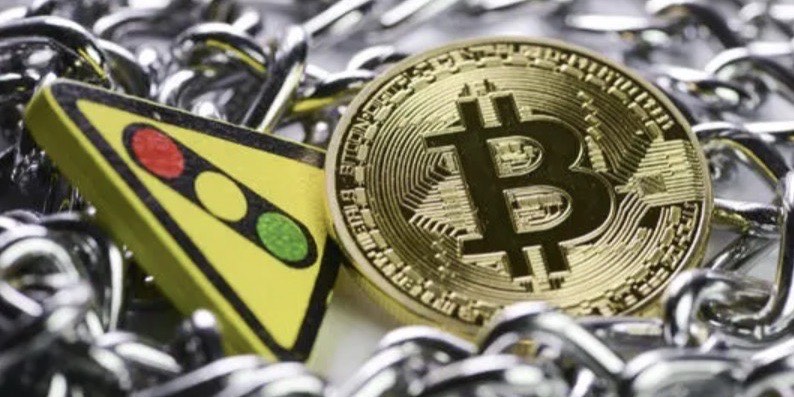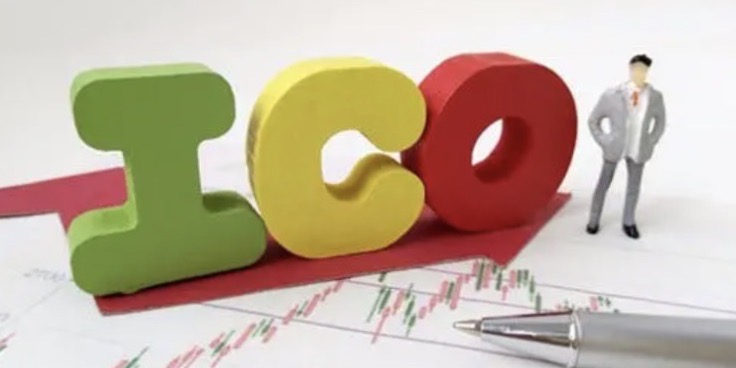Introduction to token
(1) From debt and stocks to tokens
The new financing based on tokens is different from traditional trading models.
First, there are differences in how to allocate the creditor rights of entrepreneurs. The traditional capital market requires business owners to segregatetheir rights to company assets in the form of contracts while ICO can retain economic ownership and legal control.
Second, the sources of value are different. The stock price should reflect the net present value of the legitimate rights and interests of the company’s expected future cash flow, while the pricing of cryptoassets reflects the balance between the demand and the supply of tokens.
Third, the infrastructure of the capital market can be reviewed in an established way, guaranteeing the transaction and liquidity. In contrast, the cryptocurrency market is emerging, and its participants only have experience of a few years or months. Besides, there is no Wall Street investment bank to support ICOs. However, in fact, many investors believe that the lack of specific regulations and intermediaries for ICOs is its feature instead of a loophole.
Finally, for lawyers, ICO expands the role of computer code in managing transactional relationships. Traditional capital market transactions are largely constrained by laws and regulations, contracts and social norms. ICO transactions enhance (or even replace) these financial service intermediaries by embedding controls in smart contracts with effective rules. At the same time, it also creates new roles for lawyers and other legal practitioners.

(2) Understanding cryptoassets
The concept of ICO started with cryptoassets (digital coins and symbols) in the operation center. Like physical currency, the cryptoasset is scarce, and the control over it is transferable. However, although physical coins are transmitted face-to-face (or through humans and machines), changes in the control of cryptoassets need to be implemented through the carrier of the network (through the transmission of digital keys). A cryptoasset is nothing but an entry on a distributed ledger, which specifies that a specific user identified by a certain “private key” (essentially a specific password) is the only subject who is able to exercise a set of discrete powers associated with the distributed ledger. Although their private keys may be transmitted directly in the physical world, the actual cryptoasset is destined to be only a general ledger, locked in its local protocol forever.
The history of cryptoassets began with Bitcoin and Bitcoin distributed ledgers (also known as “blockchains”). Before the advent of currency, money existed not in physical form (such as coins or paper money), but in the form of a ledger of a centralized intermediary. Bitcoin is the first important digital currency system that does not require a centralized intermediary to maintain proper account books. The key to the design of the distributed ledger and public blockchain system is how it maintains a reliable record of ownership. The Bitcoin ledger is not concentrated in one company but is copied and broadcasted through a computer network with the Internet. These computers are called “nodes”. When a Bitcoin holder broadcasts to a node to transmit Bitcoins to another user, the transaction subject does not need to rely on the credibility of any actor in the system to properly modify its copy of the ledger. Instead, they rely on economic incentives and code-based management to control nodes, ensuring that all copies of the ledger are updated equally.

(3) Prevailing ICO
With the explosive growth of the ICO market, regulators are paying more attention to this emerging field. ICOs take advantage of the fundamental tension between the cross-jurisdictional and anonymous transactions of cryptocurrency transactions and the supervisory goals.
In a traditional IPO, the U.S. Securities and Exchange Commission (SEC) and national securities regulatory agencies conduct comprehensive supervision of the issuer’s activities. It stipulates the registration of security issuance, requires the disclosure of a large amount of information during the entire cycle of securities, restricts the trading activities of all parties, and has investigative and law enforcement powers to implement corresponding laws and regulations. By the end of 2018, there is no such a definite legal system for ICO, and the token issuance is only carried out through an informal document (the “white paper”) instead of IPO documents written by a large number of lawyers.
The cryptoasset white paper is a public document used to describe the development plan of the initiator and encourage community participation. Authoritative copies are usually published on the sponsor’s website in PDF format, which makes the white paper a transparent form of information available to investors and avoids external review before the official release.
In addition to the difference in information disclosure, ICO issuance and IPO issuance are also different in terms of transaction locations. Although listed stocks are traded in mature secondary markets such as the New York Stock Exchange or Nasdaq, cryptoassets are traded in hundreds of emerging markets, sometimes under loose or even lack of supervision.
Although there are huge differences between IPO and ICO, their names are almost the same. Both require the issuance of assets, the value of which depends on the success of the company, and both are provided to individual investors. The U.S. Federal Securities Regulatory Agency also noticed the similarities in the economic functions of the two and began to adopt the provisions of the Securities Law to supervise ICOs. Some state regulators are also actively monitoring misconduct in the ICO market. Given that the ICO market is mature, these decentralized regulatory activities will be regulated through a more comprehensive regulatory scheme. Therefore, policymakers must have a detailed understanding of the rules of ICO transactions and the institutional environment.

Wild growth of smart contracts
“Paper documents” refer to traditional agreements, provided materials and promotional texts of ICOs, which mainly exist on the Internet but are similar to its predecessor in form. The “code” refers to the blockchain and related smart contracts, managing the cryptoassets sold through ICOs.
Since cryptographers first proposed the concept of smart contracts, they have been trying to use codes to replace and expand traditional institutions to ensure stable performance in transaction relationships. The ideal Utopia is “the big conglomeration of law and computer security.”
Since cryptoassets can be moved freely and anonymously via the Internet, it is difficult to locate them in specific jurisdictions. Many ICO promoters have established companies, which makes it difficult for US courts and regulators to access their assets. Therefore, even if the promises made in marketing documents and sales terms are legally binding, they may lack a simple but practical legal remedy.

Under the basic code-centered principle, ICO has inspired so many financial and corporate governance laws, so how can investors transfer control of money to entrepreneurs while protecting themselves from exploitation at the same time? In traditional capital markets, investors can rely on information disclosure and trust to manage risks. From family businesses to start-ups backed by venture capital, private companies usually have to sign contracts. In emerging markets, the cryptoasset community has proposed a technical solution to deal with the essential agency cost problem according to the coding rules of tokens.
The first protective measure is to restrict the supply of investment assets for sale. In the traditional corporate environment, every stock sold to investors provides legal rights to the surplus assets of the company. In an efficient market, changes in the number of circulation shares will affect the stock price without influencing the company’s value. Traditional company managers are restricted by fiduciary obligations and can only issue stocks within the scope permitted by the company’s (amendable) articles of association.
Supply restrictions are also important for cryptoasset investors. Tokens are not a claim on the surplus assets of a company, but generally provide investors with the right to use or manage the actual system backed by their funds. Unlike a company, an ICO is not created by submitting a company charter that restricts the issuance of stocks. Instead, it creates, restricts, and uses cryptoassets based on codes that control the content of the blockchain. Therefore, the purchaser’s protection against the inflated supply comes directly from the cryptoasset code. Since the initiators of ICO projects can do business entirely through the Internet, it may be difficult to find and prosecute them.

The second type of protection is related to the threat posed by key members of the entrepreneurial team leaving the project. Investors incentivize managers with stock options, allowing managers to share the company’s future profits, but the realization of options should be exercised in accordance with contracts. In ICOs, classic options are rare, but it is common to issue commitments on a regular basis. As one project (marketing its existing commitments) wrote, “This is a standard of governance practices designed to ensure consistent interests over the long term.”
The third protection measure is that the investors’ initially acquired rights cannot be changed. The attraction of cryptoassets and smart contracts operating on the blockchain partly depends on their “non-modifiability.” Legal contracts contain ambiguities and allow formal and informal modifications while smart contracts are drafted with detailed and precise code, seemingly stipulating the obligations of both parties permanently. Since cryptoassets are defined by smart contracts, whether these smart contracts can be modified will have a profound impact on asset prices.
A fully open system allows tokens to be modified, and its impact on value is uncertain. On the one hand, any social enterprise that exists in the medium and long term cannot rigidly adhere to the governance rules for its operation. On the other hand, when one party has the power to modify the formal relationship, the other will take risks.

1. Supply commitment
a. Minting
The issuance of cryptoassets through ICOs is created through a process called minting, an important part of ICO. It creates opportunities for early blockchain projects to raise funds quickly without the procedures required by company laws and regulations. However, it also opens the door to fraud. It can mint and sell tokens according to a given supply plan, only to produce tokens that exceed expectations, or create a special hiding place for stash.
b. Increasing supply
The total supply of minted cryptoassets can either be determined at the beginning of the project or vary according to the amount of investment received and the circulating supply of assets may also fluctuate at the same time. For example, the founding team can retain some of the initial supply of minted assets and use it to increase circulation in the future; similarly, a team can change the rules governing the ICO process to achieve various supply effects. The core is to specify and enforce (or not enforce) the maximum provision of cryptoassets through the code composed of the cryptoasset itself. The supply ceiling is a typical feature of ICO marketing.
c. Reducing supply
In a typical blockchain, the circulation of cryptoassets is like that of money. However, they are not meant to be permanently circulated. They can also be used up or “burned”, depending on the business model envisioned by the project creator. There are two forms of burning on the Ethereum blockchain. The first is the simple transfer of the tokens to the address of the “genesis” block of Ethereum. Since there is not an owner of the address, the tokens are “burned” for they cannot be used. The second method is to use the logic programmed Ethereum smart contract function to delete ownership records and reduce the total supply accordingly or even change the entire smart contract so that any token or Ether sent to the address is inaccessible.

2. Commitments granting
If controlling the supply can prevent the dilution of value, the issuance protection mechanism can handle the threat of value loss, which can be achieved by delaying the issuer’s acquisition of assets or postponing the time for asset realization. Smart contracts usually stipulate to provide a portion of the tokens for insiders, and then to lock them up until certain conditions are met before they can be used. Before the condition is triggered, the code prohibits the transmission, sale or use of tokens.
3. Modifiability
In many ICO projects, modifiability has gradually been obsoleted. Some ICO system designs have built-in modification functions. Developers can simply copy the data stored in the smart contract and create a new one, which is pre-filled with data from the former. When the issuer finally completes the product development that the ICO aims to fund, they may refuse to redeem the original tokens. This can be accomplished by two sets of rules: the primary smart contract that interacts with the user and a series of secondary smart contracts that incorporate code by reference. Similar to the typical relationship between a website’s terms of service and its privacy policy: the former usually contains a link to the latter and is designed to tie visitors to both.

Token-based financing
1. Paper documents, codes and market response
Although the ICO market is young, it is still skeptical about the theory that “investor protection codes are priced.” Like stocks, ICOs develop a wide range of secondary information sources, including “rating” websites. But most of these institutions do not review the smart contract code. For most investors, cryptocurrency investment is a practice of reading white papers, blog posts and comments, and observing trading trends on social media, but rarely involves code exploration. The impressionistic evidence makes us believe that investor protection regulations are not an important driver of market prices.
However, proponents of ICOs may make a rational response to the lack of evidence that proves the importance of the code. It believes that, on the one hand, investor protection laws and regulations may become a driving factor for future market returns; on the other hand, advocates may also abandon the significance of defending laws and regulations in protecting investors and adopt comprehensive defensive measures.
The legal protection against the exploitation of ICO investors is significantly weaker than in other investment markets. Although some class-action lawsuits mainly based on violation of state laws have filed lawsuits against some well-known ICO teams, the feasibility of their claims is still unknown. The deterrence brought by the law is much less powerful than that in the traditional capital market, and certainly not as powerful as the automatic execution of code. At a deeper level, the traditional legal deterrence debate is dangerous for ICO advocates. After all, smart contract code should have made traditional intermediaries useless, and eliminated supervision and reduced transaction costs for participants. Without these reasons, it is difficult to see the benefits of ICOs except for regulatory arbitrage.
2. Whose market is this?
There is no evidence proving that investors are well protected in the ICO market. Some people call for the entire market to be closed due to fraud, while others want the government to shut it out. Each method is raised for considerations about costs and benefits.
a. Irrational prosperity
Reputation is the key to understanding the ICO market, but it can be stolen. Taking the immaturity of the market and “speculative mania” into consideration, as of the beginning of 2019, there is ample evidence that the high valuation of the ICO market is more like a bubble than an accurate assessment of promising projects. In a sense, the bubble is the least surprising and controllable explanation for the rapid volatility of ICO market prices. Regulators need to focus on more difficult tasks, which means piercing the future bubble with better information requirements. However, irrational prosperity is not the only driver of demand for ICO.
b. Illegal demand
A large part of the demand for cryptoassets is driven by money launderers, tax evaders and other illegal cash holders. If facilitating criminal payments is indeed the main driving factor, it is not surprising that investors do not seem to care whether the issuer’s fulfillment of its commitment is achieved through smart contract code.

c. Cryptocurrency gains
The third source of ICO demand may come from investors, who have obtained generous returns from their investments in Bitcoin and Ethereum, and how they use the proceeds may promote the development of ICO to a certain extent. On the one hand, because “crypto winners” are mostly illegal, it is difficult for them to convert the cryptocurrency into legal tender through traditional channels. Therefore, ICOs provide a nice investment tool through which they can diversify holdings and try to invest proceeds in potentially profitable companies. On the other hand, the principal used by some investors to invest is itself the product of recent substantial returns, so it is easier to invest in speculative assets.
d. Smart investment
Some of the needs of ICOs may also be driven by legitimate and smart investors. In fact, many established venture capital companies, hedge funds and family offices are investing in ICOs. Do “smart investors” also play a corresponding role in the ICO market? From a regulatory perspective, the existence of “smart investors” provides not only a reason to regard ICOs as a potentially valuable innovation, but also potential leverage.




